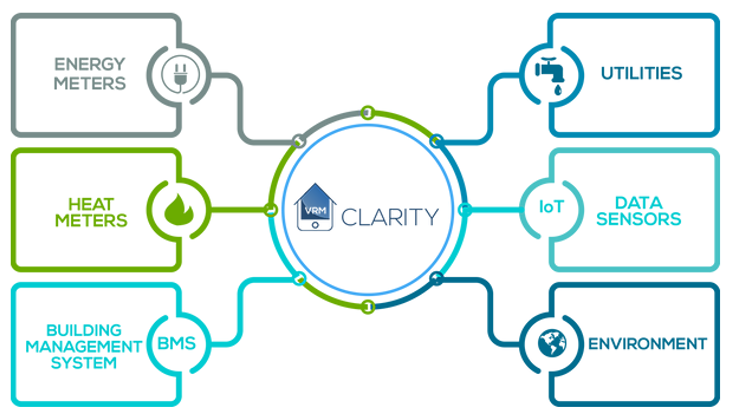2020 – A Year Like No Other
COVID-19 has changed the world for everyone, and the impact upon the construction industry in 2020 has been seismic. For some it has meant a complete, immediate and unexpected termination of their business and normal operating procedures. But every organisation and company who has survived the financial and logistical challenges has done so by adapting to the challenges presented to them. Working differently, remotely, without face-to-face contact seems an impossible task for an industry based upon physical labour, particularly with regards to the domestic retrofit arena. If a resident is not permitted to leave their property, and a contractor is not permitted to enter it, how is it possible to proceed in a safe, economically viable way?.
At VRM Tech we have been working to enable Housing Stock owners to monitor and manage their assets remotely for the last ten years. Contactless access to important information has been our driving force from the outset; the business benefits are clear (reduced site visits, reduced cost, reducing the amount of repeated inspection visits). Public health and/or compliance to regional or national lockdown conditions was not a selling point that we had envisaged. Yet here we are. In a time where remote access to vital building data has become a necessity rather than an advantage in the Housing Sector, VRM’s Clarity platform has proved a vital resource for our Social Landlords. VRM Clarity is a configurable Internet of Things (IoT) platform, facilitating the collation and visualisation of building, dwelling and environmental data for the end user.

Maintaining the Integrity of the Digital Twin
A Digital Twin can mean many things, a virtual representation of a room, a building, a bridge or even an entire city. But whatever your twin represents, one fundamental principle exists. When the physical entity changes, the twin must follow suit. Every real-world change to your building which is not reflected within your Digital Twin widens the gap between the virtual and the real. Industry confidence and interest in the Digital Twin arena must be maintained by demonstrating that accurate, reactive DTs can be achieved and maintained. Active and reliable sensor data is a key contributor to maintaining the accuracy level, it allows the end user to see changes as they happen, to install devices as part of a retrofit to monitor physical changes and to receive alert data should things go in an unexpected direction. Recent reductions in the cost of IoT infrastructure and technological advances leading to a wider range of sensor types and available parameters have opened up the opportunities that IoT can offer to those who might previously have been reluctant or unable to benefit from them.
Additional Benefits of IoT and a “Hands-Off” Approach
A viable Ditigal Twin requires access to live data via an IoT solution. A viable IoT solution requires some Capital investment and there are ongoing costs and maintenance requirements of course, as there are with the addition of any physical infrastructure to a building. The building will require a sensor array, gateways or comms to collect the sensor data, a network solution to send the data and a platform to decode and visualise it for the end user. The costs can vary but once the infrastructure is in place there are numerous additional benefits which present themselves to the building owner and/or occupiers. As a building owner you are unlikely to embark on an end-to-end IoT solution to establish a safety alert if a fire extinguisher in the building is removed, or a door is left open. You will probably not initiate an IoT scheme to send you alerts if the communal waste bin is full, or the basement level light has failed. But once you have the network established these additional benefits can be realised with relatively little cost and/or effort. From a residents’ perspective, IoT sensors can offer fire/flood safety solutions, as well as personal safety and security options such as fall or internal air quality alerts.
Challenges for 2021
The outlook for 2021 is uncertain of course, but most of us now realise that the expected “return to normal” will never materialise for the construction industry, or the customers who are served by it. To successfully navigate the “new normal”, we need to increase our remote connectivity to the buildings we own and their occupants. At VRM we are planning with the restrictions, not against them. There are challenges with regards to site access for installations of course, but when access is granted it is the responsibility of the housing owners and those of us in the Digital Twin arena to take advantage of what may be a temporary window of opportunity. For communications networks that are already in place our challenge is to use the data available in a smarter, more constructive way. Can we use the data to predict or forecast what will happen, rather than show what has happened? Can we open access to the communications networks to isolated residents who face a second year of personal restrictions?.
Case study – Croydon Council (UK)
Using the Internet of Things to improve residents’ lives. VRM is working with Croydon Council to increase the comfort and safety of living spaces while reducing energy consumption. VRM Tech has been working with Croydon Council as their technology partner to use data and the Internet of Things (IoT) to help to improve the daily lives of Croydon residents. Our aim is to provide the right data, in the right format at the right time, so stakeholders can make informed decisions to reduce energy consumption, carbon emissions and costs, whilst promoting comfort and safety. The partnership began in 2018 when VRM was asked to assist the council to prevent vulnerable residents from living in uncomfortable conditions: too hot, too cold or likely to develop damp or mould.
We ran a pilot installing IoT sensors in 20 dwellings, measuring temperature and humidity, enabling the council to remotely identify conditions that could lead to these problems. The pilot was successful with the council identifying a number of dwellings with issues. Resident liaison officers were able to intervene and make changes to prevent uncomfortable living situations. This pilot is now being rolled out to further dwellings in the borough. Following this initial successful partnership, VRM and the council have partnered on a number of different projects with an emphasis on upgrading and improving the borough’s heat networks. We used our extensive experience to aid the council in the upgrading and refurbishment of their old heating systems. It is often difficult to decide which networks to prioritise and which will give best value for money. Our specialised platform Clarity used historic energy data to identify which networks would be best suited to upgrading. Based on this information, the council commenced an extensive programme to upgrade their 21 plant rooms, installing the latest IoT hardware to bring them up to date. VRM’s Clarity platform was then used to crunch the resulting data to provide suggestions to optimise the energy networks and the buildings they supply.
Croydon’s response to these findings was to undertake a programme across district and communal heating networks to reduce energy costs for residents, drive efficiency improvements, and reduce carbon emissions, as well as comply with the 2014 Heat Networks (Metering & Billing) Regulations. Following this upgrade, the council now has full remote visibility of the networks operations, enabling them to change the control strategies to improve efficiency. The council can now remotely access the data on customised dashboards via our Clarity tool and see live data that enables them to constantly monitor the system. This has proved essential given the current Covid restrictions. We have helped Croydon identify a potential gas consumption saving target value of 40% across all of communal and district heat networks. This was key to empowering Croydon to take the necessary steps to save energy. Croydon council is now working with their partner Axis to implement an energy saving heat control strategy including smart TRV’s to common parts.
The second stage of the programme involved the installation of block-level heat meters using LoRaWAN technology on all of Croydon’s 8 District Heat Networks to enable the Monitoring of heat meter data. This was recently completed in the autumn and analysis is ongoing. The heat network efficiency will be monitored throughout the winter heating season to provide energy efficiency recommendations to demonstrate energy, cost and carbon savings from live data. Going forward, VRM and the council will continue to provide energy reports throughout the heating season to ensure optimum savings can continue to be made and allow for comparison to previous winter seasons. The result of these changes is healthier buildings that consume less energy, emit less carbon, helping the council to reduce costs, achieve their climate change targets, and improve the wellbeing of building users.
Going forward
Working closely with Croydon Council, we have exciting plans for the future. The focus is to ensure that energy use is monitored and optimised across the borough. We are also looking to empower small teams to do more with the limited resources they have.
Conclusion
IoT has a clear role in the journey to connect individuals to buildings, and buildings to their Digital Twins. Through our involvement in the H2020 SPHERE Project VRM will continue to work with industry leading experts within the Digital Twin arena in 2021 and beyond. Our aim is to improve, increase and deliver the data that customers need, to allow them to manage complex projects from their kitchen table, even if the dog does keep jumping up onto the laptop.
Written by Andrew Lovern, from VRM Tech
